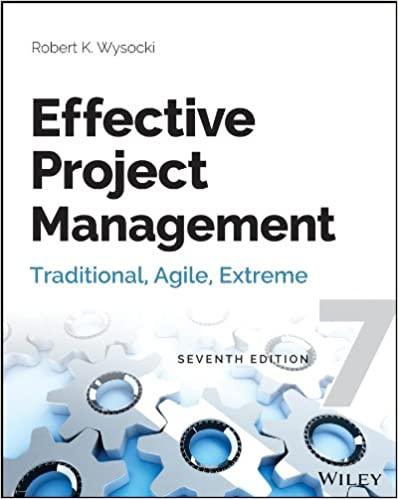Question
You are the Chief Customer Officer (CCO) for a medium-sized online marketplace specializing in consumer non-perishable products with annual revenues of $500 Million and 800
You are the Chief Customer Officer (CCO) for a medium-sized online marketplace specializing in consumer non-perishable products with annual revenues of $500 Million and 800 total employees. Your organization serves customers (mostly B2C) throughout North America. Prices of products are generated by a pricing algorithm that adjusts the price of the contents in the cart based on distribution centers the items come from for geographic and cost efficiency. However, increasingly there is a push toward incorporating customer data into the pricing algorithm based upon product demand, customer reviews, etc. You and your team's scope as a customer-centric business is to develop, plan, and handle the total relationship with the organization's customers.
Due to potential security risks with customer data and Intellectual Property data (including the pricing algorithm mentioned above) being leaked and additional Total Cost of Ownership (TCO) concerns involved with continued outsourcing to another vendor's CRM software, you have elected to move away from your current vendor and develop your own full-suite CRM in house. This is a large undertaking and will require a significant investment in capital, company resources, and strategic innovation. You are developing the details and plan for the new system, which will be presented to the CEO and Board of Directors at your next quarterly meeting.
Your Proposed CRM Solution should include and address the following elements:
Section I - Strategic CRM (linked to Course Outcomes 1, 2)
-Provide an Introduction/Overview of Strategic CRM
-Provide your Customer Segmentation Strategy, clearly indicating how customers will be organized and classified.
-Provide your Customer Acquisition Strategy, clearly estimating how new customers will be acquired.
-Provide your Customer Retention Strategy, clearly estimating how existing customers will be retained.
-Provide your Win-Back Strategy, clearly estimating how lost customers will be regained.
Section II - Operational CRM (linked to Course Outcomes 1, 3, 4)
-Provide an Introduction/Overview of Operational CRM
-Formulate a written description of the basic Server Architecture of your CRM database. In other words, will it be hosted/installed locally or an Application Service Model (ASP)/SaaS/Cloud-based under the organization's direct control? Remember to carefully consider the goals and concerns of the organization in this scenario, as well as TCO (Total Cost of Ownership) when making your decision.
-Describe the plan for Mobile Functionality/Platform (App or Web-based) of the marketplace's content. Consider how customers will likely desire to interact with (browse/purchase) the organization's array of consumer products and at what times/modes.
-Explain the Sales Force Automation Functionality of your system (Account, Management/Activity, Contact, Event Management, etc.).
-Explain the Marketing Automation Functionality of your system (Lead Gen., Telemarketing, Trigger Marketing, Campaign Management, etc.).
-Explain the Service Automation Functionality of your system (Contact Centers, Call Centers, Help Desks, Field Service, etc.).
Section III - Analytical CRM (linked to Course Outcomes 1, 5)
-Provide an Introduction/Overview of Analytical CRM
-Interpret and relay what Structured Data considerations you will need to be aware of. How will your proposed system in this scenario account for Structured Data?
-Differentiate how will your system account for Unstructured Data (unorganized customer-related data) that is generated by users.
-Determine and relay how your system will account for Duplication of Data (e.g. differing customer emails or addresses for the same customer number/ID)?
-Provide reasoning for this scenario in which it would make sense to purchase Secondary Data or why it may not, based upon your understanding of the organization's and customers' needs.
-Identify at least 7 fields that your proposed CRM's relational database will keep track of for every customer (e.g. customer name, email address, etc.) and briefly explain why each of those are a necessary minimum for this use/application.
Section IV - Social/Future CRM Expansion Capabilities (linked to Course Outcomes 3, 6)
-Describe your approach to creating a customer-centric Privacy Policy
-Discuss the Expansion Capabilities of your proposed CRM system/solution for at least any two of the following technologies below which could be used to capture and/or efficiently house customer data. For this section, you will likely need to research on existing CRM systems of similar companies to see how they are implementing some of these newer technologies.
Machine Learning/AI
Big Data
RFID
Proximity Marketing
DataMart/Data Warehouse
3D Printing
Cashier-free Retail (e.g. Amazon Go, AiFi)
IoT (Internet of Things)
Social Media Monitoring/Social CRM
Virtual Reality/Augmented Reality
Voice Recognition
Predictive Analytics
Step by Step Solution
There are 3 Steps involved in it
Step: 1

Get Instant Access to Expert-Tailored Solutions
See step-by-step solutions with expert insights and AI powered tools for academic success
Step: 2

Step: 3

Ace Your Homework with AI
Get the answers you need in no time with our AI-driven, step-by-step assistance
Get Started


